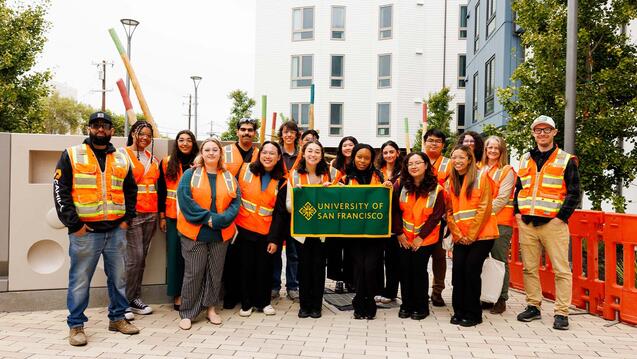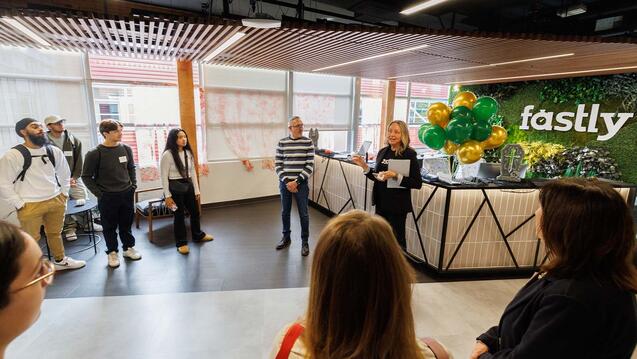Computer Science Enrichment Program Focuses on Female Students
As freshman Lauren Chinn begins classes at the University of San Francisco, she is already familiar with her major in computer science, thanks to a USF-sponsored program aimed at female high school students.
Like many participants, Chinn hadn’t taken a computer science class before starting the program last year. Yet, she was intrigued by the opportunity to learn more about the topic before starting college.
“I thought, ‘I don’t know what we’re going to do. I don’t know much about computers, but we’ll see,’” Chinn said. “It ended up being so much fun.”
That’s precisely the response Sami Rollins hopes the program elicits. An assistant professor of computer science, Rollins organized the weeklong program, which draws rising juniors and seniors from high schools across the Bay Area and exposes them to
a field many women never consider. The program, Rollins said, is USF’s way of responding to the growing concern about a lack of women in the computer science field. According to the Computing Research Association, only 12 percent of bachelor’s degrees in computer science and computer engineering were awarded to women in 2007.
“The lack of women in computer science is a huge issue these days,” Rollins said. “The idea (behind the program) is to try and get students who might not otherwise be interested to be interested in computer science.”
Funded through the dean’s office of the College of Arts and Sciences, the program drew 19 students from across the Bay Area this summer. Not all will end up at USF or in computer science like Chinn, but they’ll have more of an understanding of an increasingly important field.
Other than a $20 application fee, the program is free for students. No computer experience is necessary – students simply must be interested in learning about the topic. Not only did this year’s program emphasize hands-on activities such as taking apart and rebuilding computers, but it also featured talks by prominent women in the field of computer science. In addition, the students spent a day on a field trip to Sun Microsystems’ headquarters in Santa Clara.
“I really tried to focus on things they wouldn’t have done if they had taken a computer science class in high school,” Rollins said.
That included programming handheld sensors that can pick up changes in temperature and movement. Sensor networking, as it’s called, is a very hot area of computer science right now, Rollins said. For the students, however, working with the sensors was more about having the chance to see the effects of their programming with buttons lighting up in response to computer commands.
One of Rollins’ primary goals for the program was to clear up any lingering stereotypes about computer science. She recalled the words of one speaker who told the students: “I don’t sit in a basement all day and write computer programs.” Rollins said many students were intrigued to learn the role computer science plays in different fields, including climate change. Without computer scientists, for example, it would be impossible to track data on environmental impacts and carbon footprints.
The potential for the course is limitless, Rollins said. In the future, she may try to reach girls at an even younger age and work in conjunction with high school teachers.
Even without those expansions, the program is having an impact on students like Chinn, who decided to take a computer science class at her high school because of her experience in USF’s program. She acknowledges that without the program, she would not have considered studying computer science nor would she have applied to USF.


